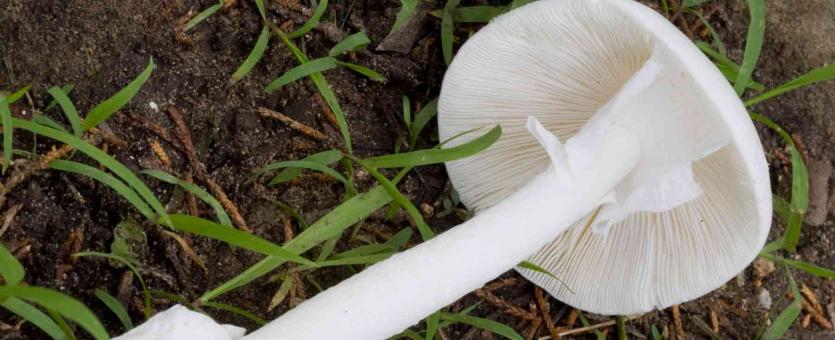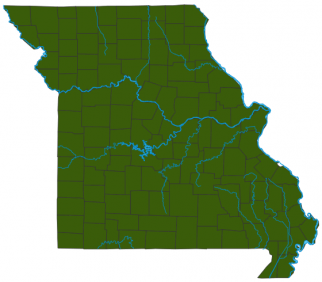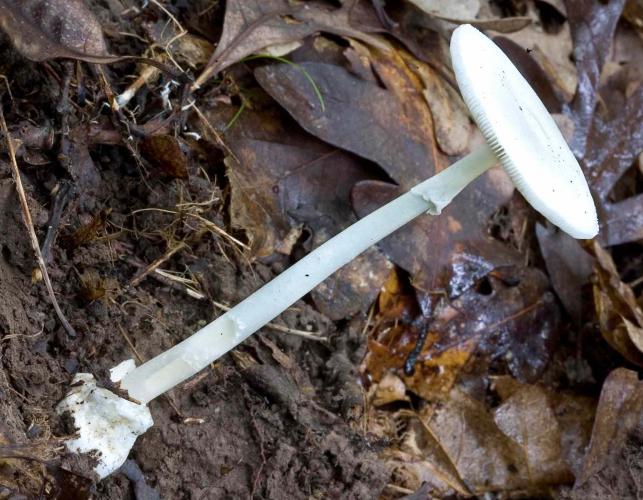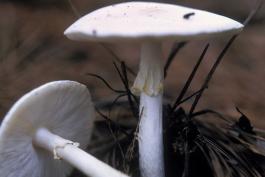
All white, with a ring on the stalk and a large, saclike cup around the stalk’s base (sometimes hidden underground). Grows on the ground in mixed woods and in grass near trees. June–November. Cap curved to flat with central swelling; smooth margin; dull to shiny white; texture smooth, tacky when wet. Gills narrow to broad; spacing close; white; gills free or slightly attached. Stalk sometimes enlarging toward the base; white; texture cottony to shaggy; with a ring. Universal veil white, leaving a large, saclike cup around the base of the stalk; partial veil leaves a large, white, skirtlike ring on the upper part of the stalk. Spore print white. Spores magnified are nearly round to round, smooth.
Lookalikes: Meadow mushroom has pink gills that turn brown, a brown spore print, and lacks a basal, saclike cup. Other amanitas look similar. In the past, Amanita virosa was considered a close lookalike, but DNA testing has shown that it is not found in the United States.
Cap width: 2–5 inches; stalk length: 3–8 inches; stalk width: ¼–¾ inch.

Statewide.
Habitat and Conservation
Very common. Grows on the ground in mixed woods and in grass near trees. The destroying angel is a beautiful mushroom and is very common in Missouri woods. Look, but do not taste!
Status
DEADLY. The name “Destroying Angel” is well deserved. Symptoms of poisoning often don’t appear until 6–24 hours after eating, and include vomiting, diarrhea, and cramps. Later, kidney or liver dysfunction occurs and can lead to death. Animals, including pets and livestock, are not immune to the toxin.
Life Cycle
This species is mycorrhizal: It exists most of the time as a network of cells (mycelium) connected to tree roots, in a symbiotic partnership with the tree. Many trees fare poorly without their fungal partners. When ready to reproduce, the mycelium develops the mushroom, which is a reproductive structure. Spores are produced in the gills and are released to begin new mycelia elsewhere. The mycelium of a mushroom can live for decades.
Human Connections
Occasional news stories tell of immigrants being poisoned by mushrooms. Sometimes people from foreign lands mistake poisonous mushrooms of North America for similar-looking but edible ones from their homelands. The destroying angel is one of the main culprits in these tragedies.
Ecosystem Connections
This is one of the many fungus species that help nourish forest trees through a symbiotic connection with tree roots. The netlike fibers of the fungus multiply the roots' ability for absorbing water and nutrients. In return, the tree shares nutrients with the fungus.








Mushrooms are a lot like plants, but they lack chlorophyll and have to take nutrients from other materials. Mushrooms are neither plants nor animals. They are in a different kingdom — the fungi. Fungi include the familiar mushroom-forming species, plus the yeasts, molds, smuts, and rusts.
Always be cautious when eating edible mushrooms. Be absolutely sure of the ID, and only eat a small amount the first time you try it to avoid a reaction..





















